The Golden Age of Science Fiction: The 1973 Hugo and Nebula Awards for Best Novel: The Gods Themselves by Isaac Asimov
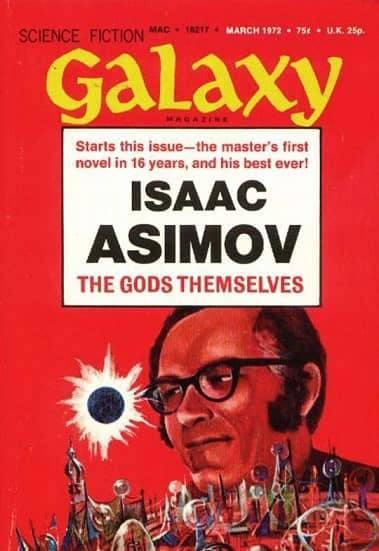 |
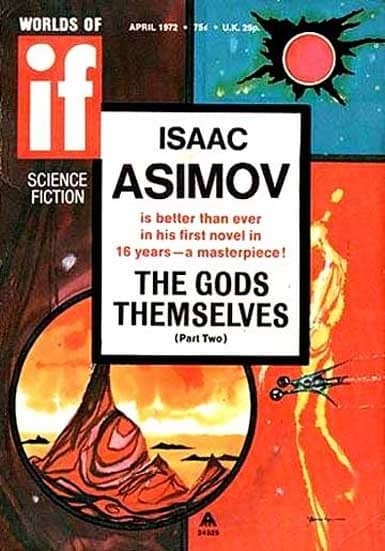 |
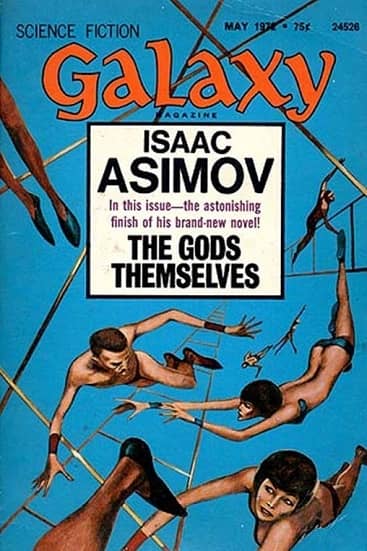 |
Galaxy and IF magazines serializing Asimov’s The Gods Themselves in 1972. Covers by Jack Gaughan
In 1973 the Hugo, Nebula, and Locus Awards for Best Novel were each won by The Gods Themselves, by Isaac Asimov. The Gods Themselves also won Australia’s Ditmar Award for Best International Novel.
Isaac Asimov had won two previous Hugos, but neither was a “Regular” Hugo – he won a Special Award for his F&SF Science articles in 1963, and in 1966 the Foundation Series was named Best All-Time Series, a one-time category, beating out (to his expressed great surprise) Robert A. Heinlein’s Future History, Doc Smith’s Lensmen novels, Edgar Rice Burroughs’ Barsoom series, and J. R. R. Tolkien’s The Lord of the Rings. Asimov had largely stopped writing fiction in the late 1950s, slowing down to roughly a short story a year through the 1960s. Beginning in the early ‘70s, however, he began to produce more fiction, including the Black Widower mysteries, and some more SF. Robert Silverberg coaxed a story out of him for his new original anthology series, New Dimensions, and Asimov wrote “Plutonium-186,” but soon realized it should be a full novel. (He gave Silverberg another story, “Take a Match.”) “Plutonium-186” became The Gods Themselves, his first novel in 15 years (not counting the novelization of the movie Fantastic Voyage.)
The novel was first serialized in a strange way. Galaxy and If were sister magazines, each published bi-monthly. So the three (fairly separate) parts of The Gods Themselves appeared in Galaxy for March-April 1972, If for March-April 1972, and then Galaxy for May-June. The hardcover appeared from Doubleday in May.
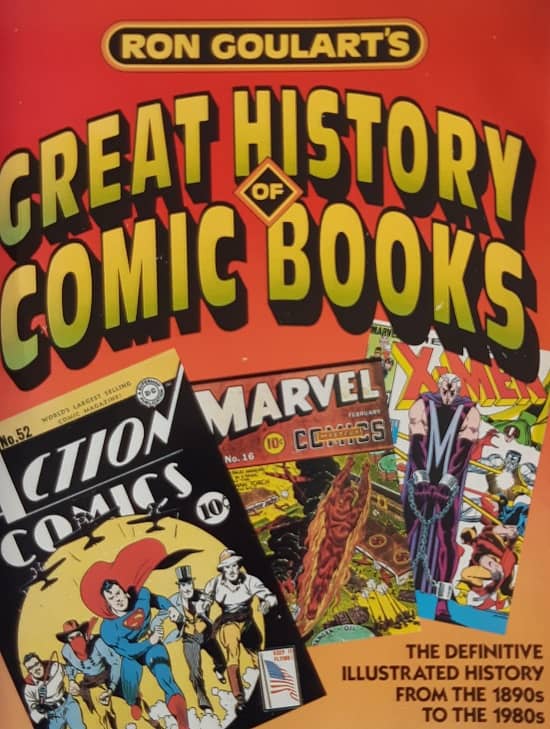
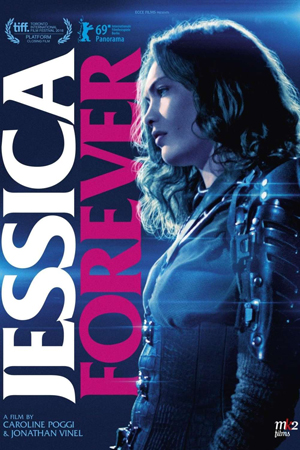 My first movie on July 30 was the first feature by two French directors of independent short films, Caroline Poggi and Jonathan Vinel. Jessica Forever, which the duo wrote as well as directed, is set in a near future in which disaffected and violent youth, mostly male, roam empty suburbs. The law hunts them down with killer drones, and the movie opens with a cloud of drones after one man, Kevin (Eddy Suiveng), who has squatted in an empty house. He’s saved from the law by a mysterious woman named Jessica (Aomi Muyock) and her squad of young men, who welcome Kevin into the fold.
My first movie on July 30 was the first feature by two French directors of independent short films, Caroline Poggi and Jonathan Vinel. Jessica Forever, which the duo wrote as well as directed, is set in a near future in which disaffected and violent youth, mostly male, roam empty suburbs. The law hunts them down with killer drones, and the movie opens with a cloud of drones after one man, Kevin (Eddy Suiveng), who has squatted in an empty house. He’s saved from the law by a mysterious woman named Jessica (Aomi Muyock) and her squad of young men, who welcome Kevin into the fold.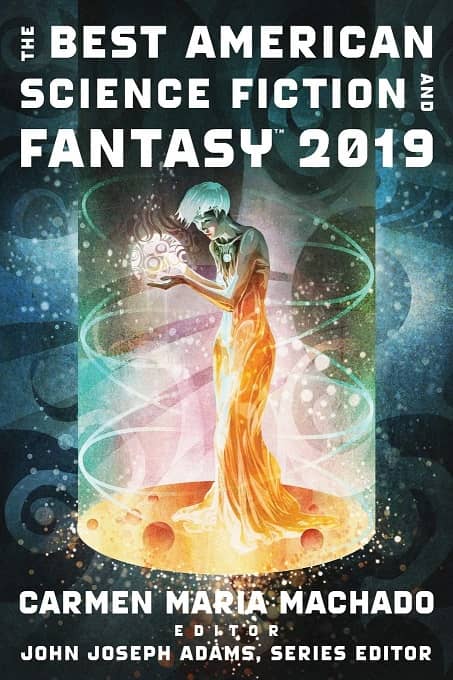
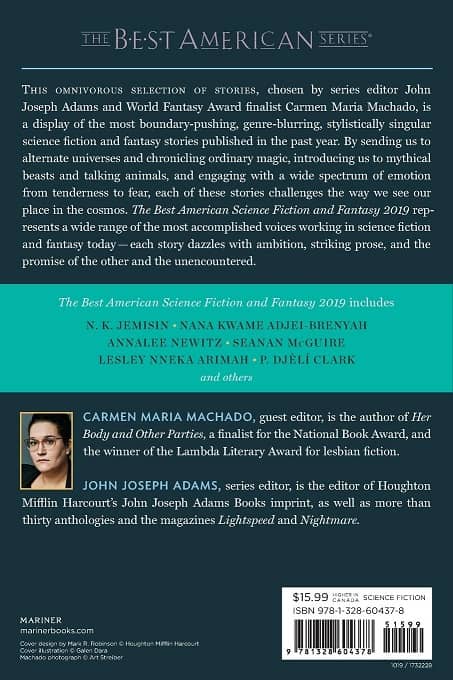
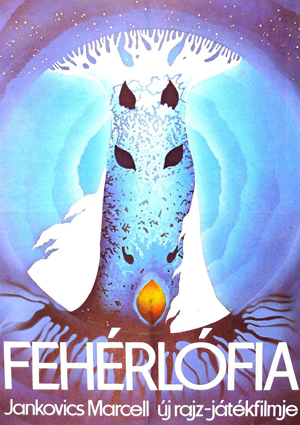 The last of the four movies I had on my schedule for July 29 promised to be interesting on any number of levels. Son of the White Mare (Fehérlófia) is an animated film made in 1981 by Hungarian Marcell Jankovics, directed by him from a script he wrote with László György. It’s based on the work of poet László Arany and folktales of the Magyars and Avars; Jankovics, who has published 15 books on comparative mythology, picked and chose from among the various versions of the tale to create what he wanted — a weird, protean, eye-popping, archetypal light show.
The last of the four movies I had on my schedule for July 29 promised to be interesting on any number of levels. Son of the White Mare (Fehérlófia) is an animated film made in 1981 by Hungarian Marcell Jankovics, directed by him from a script he wrote with László György. It’s based on the work of poet László Arany and folktales of the Magyars and Avars; Jankovics, who has published 15 books on comparative mythology, picked and chose from among the various versions of the tale to create what he wanted — a weird, protean, eye-popping, archetypal light show.

 My third screening on July 29 was a double-feature at the De Sève Cinema of two animated movies, a long short and a short feature. “A Japanese Boy Who Draws” (ある日本の絵描き少年) is 20 minutes long. Twilight, which I immediately came to think of as (Not That) Twilight (and in fact some places online translate the title 薄暮, Hakubo, as Project Twilight), is 53 minutes long. They’re both slice-of-life films about young people in Japan making art, but are otherwise very different narratively and visually. Which is to say they have enough in common and enough contrast to make a fine double bill.
My third screening on July 29 was a double-feature at the De Sève Cinema of two animated movies, a long short and a short feature. “A Japanese Boy Who Draws” (ある日本の絵描き少年) is 20 minutes long. Twilight, which I immediately came to think of as (Not That) Twilight (and in fact some places online translate the title 薄暮, Hakubo, as Project Twilight), is 53 minutes long. They’re both slice-of-life films about young people in Japan making art, but are otherwise very different narratively and visually. Which is to say they have enough in common and enough contrast to make a fine double bill.


